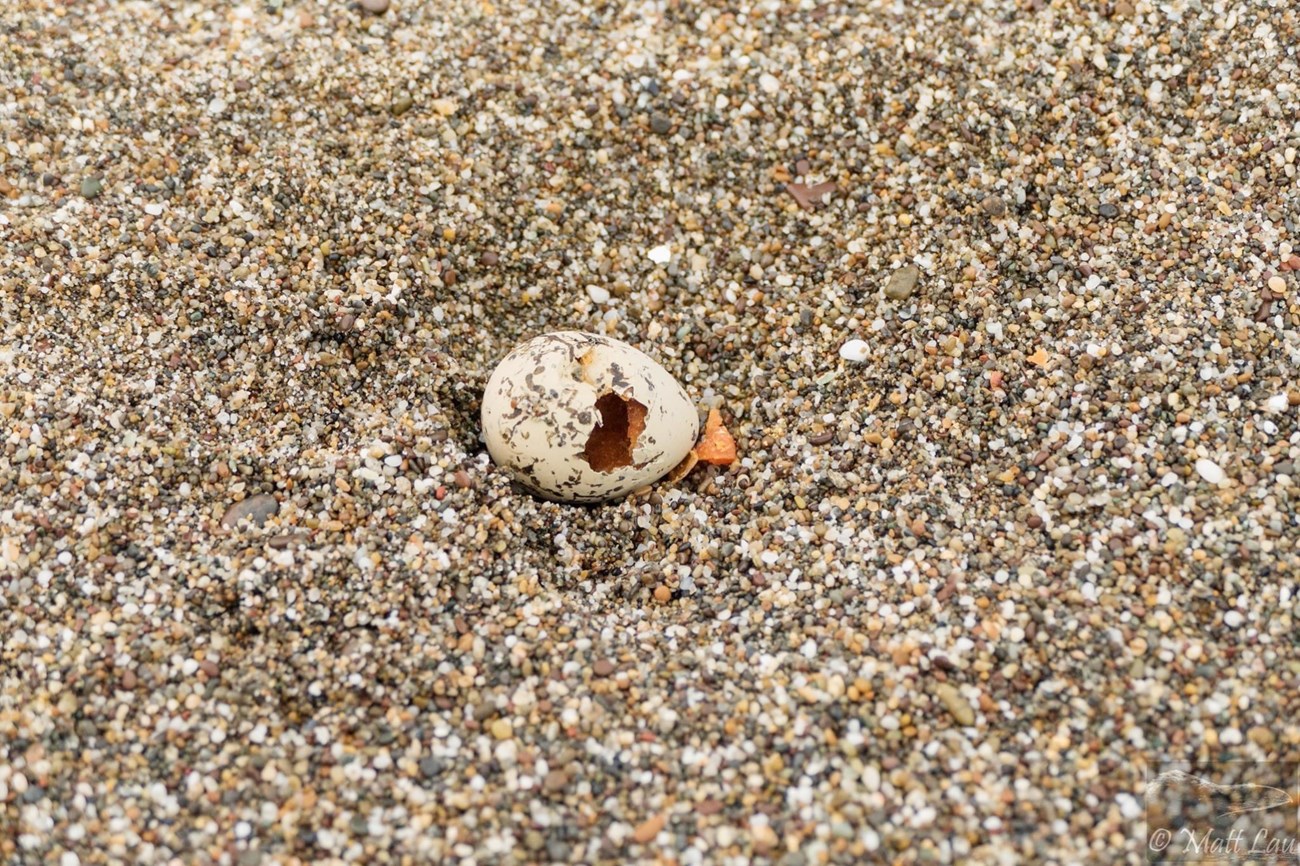Last updated: May 8, 2020
Article
Point Reyes Compiles Information on Snowy Plover-Common Raven Conflicts

NPS / Matt Lau
April 2020 - Common raven numbers have exploded across the West because of reliable human resources, such as trash, agricultural practices, fresh water sources, and roadkills. But these hawk-sized omnivores eat far more than trash. They also hunt eggs and small animals. At-risk species like greater sage-grouse and desert tortoises are negatively affected by the increase in raven numbers. To learn more about the scope and scale of such raven conflicts in the region, biologists with the US Fish & Wildlife Service (USFWS) formed a committee. In collaboration with the coast-wide snowy plover working group, biologists from Point Reyes National Seashore recently submitted information to this committee. In particular, they detailed the impacts ravens have had on nesting western snowy plovers within the park.
Common ravens prey on western snowy plover eggs and hatchlings in Point Reyes. The breeding snowy plover monitoring program at the park has documented such impacts since it began in 1996. Between 1996 and 2019, biologists found 658 western snowy plover nests in the park. Common ravens depredated at least 78 (11.9%) of them.
Before 2013, common ravens depredated approximately 5% of snowy plover nests, due in part to reliance on nest exclosures. Biologists began decreasing nest exclosure use in 2013 to reduce risks to adult plovers (see Lau et al. 2017 and Hardy and Colwell 2008 for more information). Between 2013 and 2019, raven nest depredation soared to 21.2%. Common raven impacts increased significantly in 2019. Of the 35 plover nests found in the park, 45.7% were lost to ravens.
Common ravens have even caused local extirpation of breeding plovers in Point Reyes. One event occurred during the 1989 breeding season. Biologists from what is now Point Blue Conservation Science observed plovers move from Point Reyes Great Beach to a site more than 20km north to avoid high raven depredation pressure. More recently, park biologists documented an increase in the number of ravens at the Abbotts Lagoon restoration area. They counted 1.4 ravens per hour in 2015, and 11 per hour in 2019. Faced with rising nest loss, the plovers have been fleeing to other sites.
Point Reyes biologists aim to help the park's breeding snowy plovers to recover. To do so, they need to be able to try more comprehensive, innovative techniques to ease common raven depredation pressure. With their submission to USFWS on the park’s raven-plover conflicts, they hope to secure logistical and financial support to do just that.
For more information
- Contact Snowy Plover Ecologist Matt Lau
- Pacific Coast Science and Learning Center Western Snowy Plovers webpage
- Snowy Plovers at Point Reyes webpage
- San Francisco Bay Area Network Western Snowy Plover Monitoring webpage
- Hardy, M.A., and M.A. Colwell. 2008. The impact of predator exclosures on Snowy Plover nesting success: a seven-year study. Wader Study Group Bulletin 115:161-166.
- Lau, M.J., T.R. King, and D.T. Press. 2017. Observation of a great horned owl inside a western snowy plover nest exclosure. Wader Study 124:78-80.
